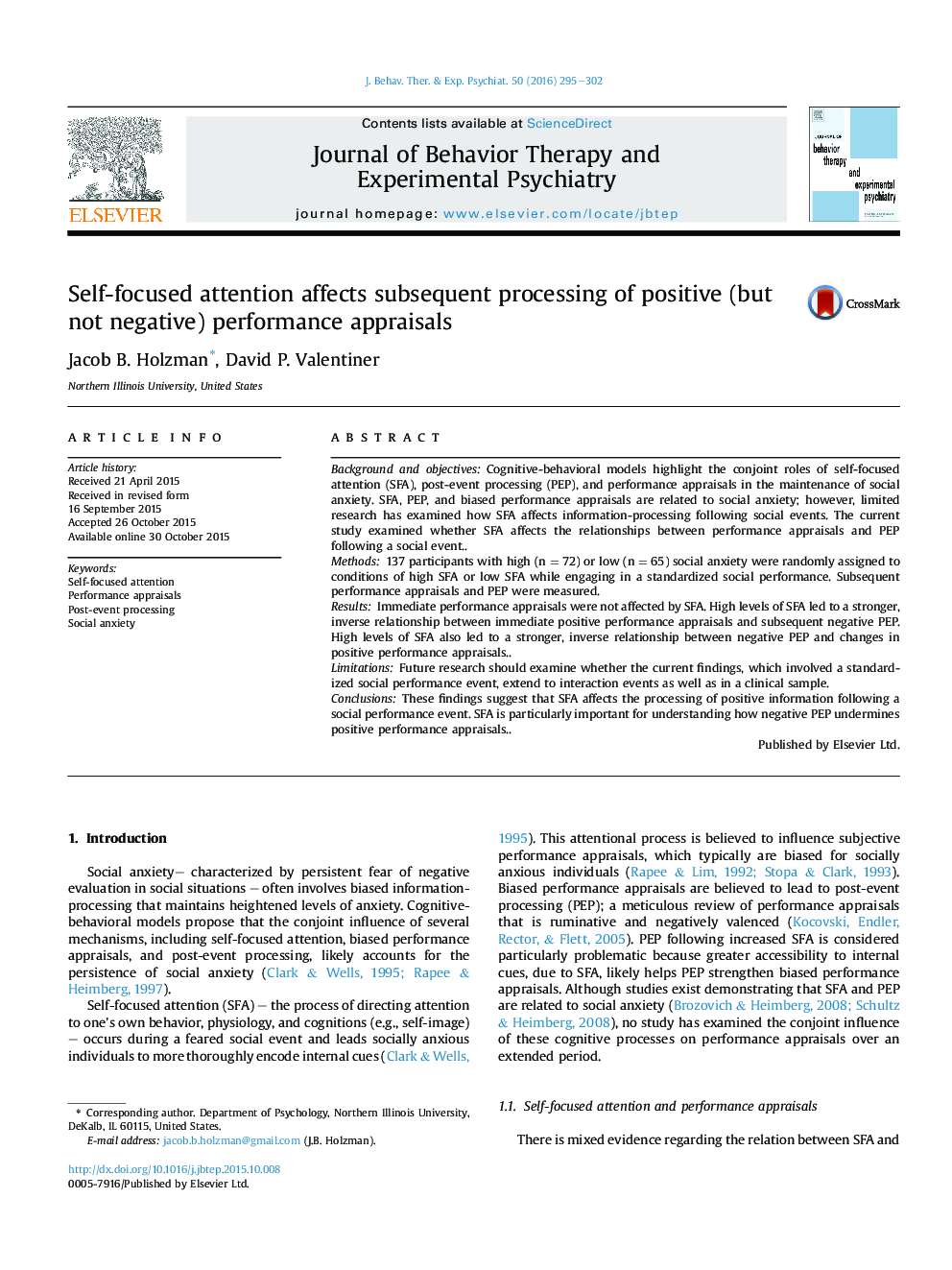| کد مقاله | کد نشریه | سال انتشار | مقاله انگلیسی | نسخه تمام متن |
|---|---|---|---|---|
| 910312 | 1473066 | 2016 | 8 صفحه PDF | دانلود رایگان |
• Self-focused attention was manipulated during a social performance event.
• Self-focused attention affected changes in positive performance appraisals.
• Post-event processing predicted changes in positive performance appraisals when self-focused attention was high, not low.
• Self-focused attention did not affect changes in negative performance appraisals.
Background and objectivesCognitive-behavioral models highlight the conjoint roles of self-focused attention (SFA), post-event processing (PEP), and performance appraisals in the maintenance of social anxiety. SFA, PEP, and biased performance appraisals are related to social anxiety; however, limited research has examined how SFA affects information-processing following social events. The current study examined whether SFA affects the relationships between performance appraisals and PEP following a social event..Methods137 participants with high (n = 72) or low (n = 65) social anxiety were randomly assigned to conditions of high SFA or low SFA while engaging in a standardized social performance. Subsequent performance appraisals and PEP were measured.ResultsImmediate performance appraisals were not affected by SFA. High levels of SFA led to a stronger, inverse relationship between immediate positive performance appraisals and subsequent negative PEP. High levels of SFA also led to a stronger, inverse relationship between negative PEP and changes in positive performance appraisals..LimitationsFuture research should examine whether the current findings, which involved a standardized social performance event, extend to interaction events as well as in a clinical sample.ConclusionsThese findings suggest that SFA affects the processing of positive information following a social performance event. SFA is particularly important for understanding how negative PEP undermines positive performance appraisals..
Journal: Journal of Behavior Therapy and Experimental Psychiatry - Volume 50, March 2016, Pages 295–302
